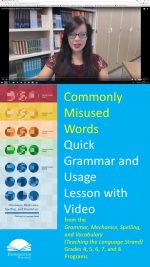Compound-Complex Sentences
Compound-Complex Sentences
Play the quick video lesson HERE and click the upper left back arrow to return to this lesson.
Common Core Language Standard 1
Good writers focus on their readers. Readers understand more of what is written when there is some sentence variety. If every sentence is a short, simple sentence, the reader will be bored quickly. The same is true if every sentence is long.
Today’s grammar and usage lesson is on compound-complex sentences. Remember that a simple sentence has one independent clause and no dependent clause. A compound sentence has two or more independent clauses, but no dependent clauses. A complex sentence has an independent clause and at least one dependent clause.
Now let’s read the grammar and usage lesson and study the examples.
A compound-complex sentence has two or more independent clauses and a dependent clause. Example: I like him and he likes me, even if we don’t see each other very much.
Now circle or highlight what is right and revise what is wrong according to grammar and usage lesson.
Practice: I let them talk since I had already spent time with her and I loaded the car.
Let’s check the Practice Answers.
Grammar and Usage Practice Answers: Since I had already spent time with her, I let them talk and I loaded the car.
Now let’s apply what we have learned.
Writing Application: Write your own sentence using a compound-complex sentence.
*****

Pennington Publishing Grammar Programs
Teaching Grammar, Usage, and Mechanics (Grades 4, 5, 6, 7, 8, and High School) are full-year, traditional, grade-level grammar, usage, and mechanics programs with plenty of remedial practice to help students catch up while they keep up with grade-level standards. Twice-per-week, 30-minute, no prep lessons in print or interactive Google slides with a fun secret agent theme. Simple sentence diagrams, mentor texts, video lessons, sentence dictations. Plenty of practice in the writing context. Includes biweekly tests and a final exam.
Grammar, Usage, and Mechanics Interactive Notebook (Grades 4‒8) is a full-year, no prep interactive notebook without all the mess. Twice-per-week, 30-minute, no prep grammar, usage, and mechanics lessons, formatted in Cornell Notes with cartoon response, writing application, 3D graphic organizers (easy cut and paste foldables), and great resource links. No need to create a teacher INB for student make-up work—it’s done for you! Plus, get remedial worksheets, biweekly tests, and a final exam.
Syntax in Reading and Writing is a function-based, sentence level syntax program, designed to build reading comprehension and increase writing sophistication. The 18 parts of speech, phrases, and clauses lessons are each leveled from basic (elementary) to advanced (middle and high school) and feature 5 lesson components (10–15 minutes each): 1. Learn It! 2. Identify It! 3. Explain It! (analysis of challenging sentences) 4. Revise It! (kernel sentences, sentence expansion, syntactic manipulation) 5. Create It! (Short writing application with the syntactic focus in different genre).
Get the Diagnostic Grammar, Usage, and Mechanics Assessments, Matrix, and Final Exam FREE Resource:
![]()







